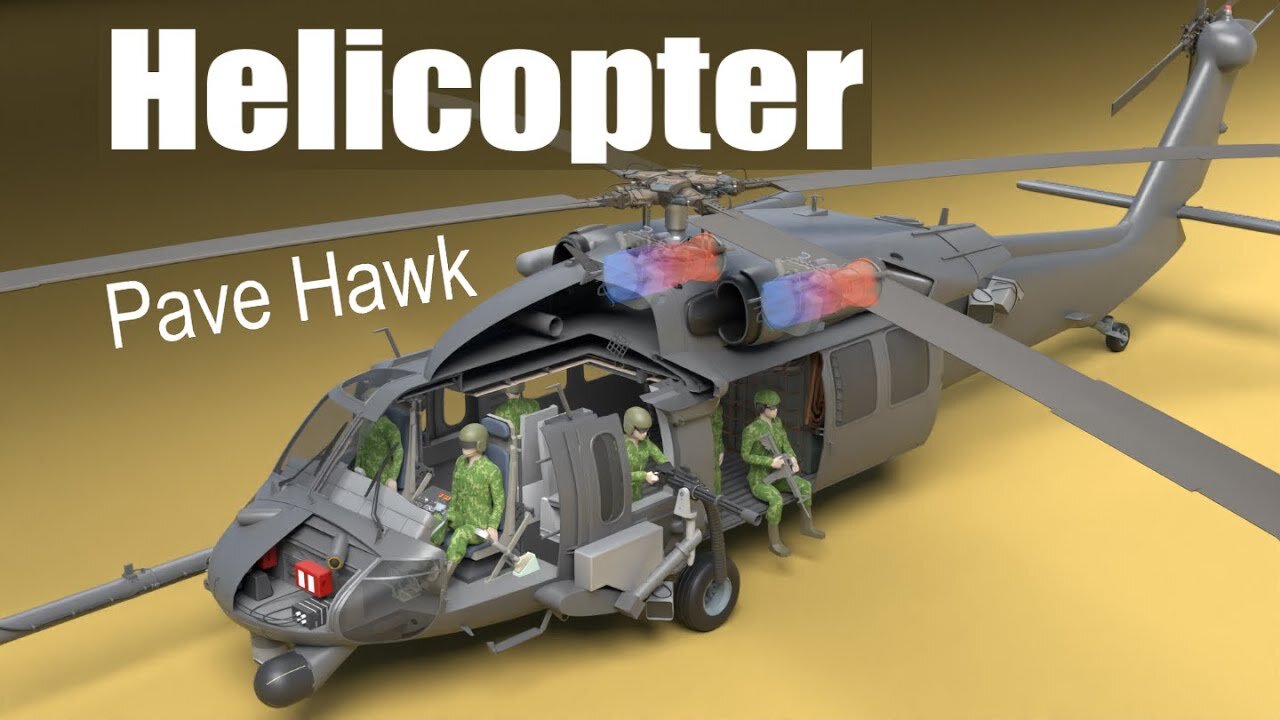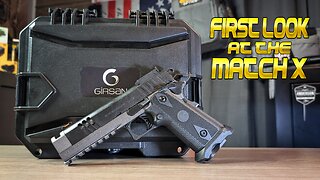Premium Only Content

How does a Military Helicopter work?
A military helicopter, like any other helicopter, operates on the principles of aerodynamics and utilizes various mechanical and electronic systems to achieve controlled flight. While I can't provide you with an actual video description, I can certainly give you an overview of how a military helicopter works and the key components involved.
Rotor System:
The most distinctive feature of a helicopter is its rotor system, which typically consists of two or more rotor blades attached to a central hub. The rotor blades spin to generate lift, allowing the helicopter to take off and land vertically.
Powerplant:
Helicopters are powered by engines, often gas turbine engines. These engines provide the necessary power to drive the rotor system and other onboard systems. The powerplant is a critical component, as it directly influences the helicopter's performance and capabilities.
Transmission System:
The transmission system transfers power from the engine to the rotor system. It includes a complex set of gears and shafts to ensure the rotor blades spin at the correct speed and with the required torque for flight.
Flight Controls:
Military helicopters are equipped with advanced flight control systems. These systems include a combination of mechanical and electronic controls that allow the pilot to maneuver the helicopter in three dimensions. Pilots use a collective control (controls the pitch of all rotor blades collectively), cyclic control (controls the tilt of the rotor disc), and anti-torque pedals (controls the tail rotor's thrust) to navigate.
Avionics:
Military helicopters are equipped with sophisticated avionics systems, which include navigation, communication, and targeting systems. These systems enhance situational awareness, communication capabilities, and the helicopter's ability to carry out various missions, including reconnaissance, transport, and attack.
Armor and Defensive Systems:
Many military helicopters are designed with features to enhance survivability on the battlefield. This may include armor to protect against small arms fire, as well as defensive systems such as flares and chaff to counteract incoming missiles.
Specialized Equipment:
Depending on the helicopter's mission, it may be equipped with specialized systems such as radar, infrared sensors, cameras, weapons, and other mission-specific gear.
Fuel System:
Military helicopters have a fuel system that stores and manages the helicopter's fuel supply. The fuel efficiency and range of a military helicopter are crucial factors in its operational capabilities.
In a "rumbel" video description, it's possible that you're referring to a video that emphasizes the sound or "rumble" produced by military helicopters, possibly during a demonstration or exercise. The distinct sound of helicopter rotors and engines can be quite intense and is often associated with their powerful and dynamic presence.
-
 17:19
17:19
SLS - Street League Skateboarding
17 days agoTop Moments from the Men’s Super Crown Final! Nyjah Huston, Giovanni Vianna and Gustavo Ribeiro 👑
52.5K -
 LIVE
LIVE
Major League Fishing
3 days agoLIVE! - Bass Pro Tour: Stage 1 - Day 3
854 watching -
 47:00
47:00
vinndoggradiousa
5 days agoBYE LEGACY MEDIA guest/ Sam Anthony of YourNews.com
5.7K -
 13:55
13:55
Clownfish TV
15 hours agoOrcs REMOVED from Dungeons & Dragons New Monster Manual?!
6.12K8 -
 15:38
15:38
Chris From The 740
6 hours ago $1.82 earnedThe EAA Girsan Match X 2311 : Premium Features, Unbeatable Value!
25.4K11 -
 14:23
14:23
Degenerate Jay
3 hours ago $0.25 earnedPeople Forgot What Metal Gear Solid Is?
13.6K5 -
 1:01:23
1:01:23
FamilyFriendlyGaming
17 hours ago $3.34 earnedCat Quest III Episode 14
30.4K -
 3:16:59
3:16:59
RG_GerkClan
6 hours ago🔴LIVE - Dominating One Raid at a Time - Escape From Tarkov - Gerk Clan
27.8K1 -
 1:49:43
1:49:43
Game On!
15 hours ago $2.12 earnedNFL Experts Top 10 Super Bowl Props!
23.3K2 -
 28:31
28:31
SB Mowing
1 day agoSiblings FEUD went so far the grass grew TALLER THAN THE HOUSE
76.5K20